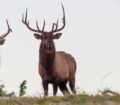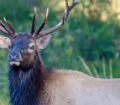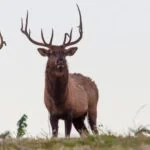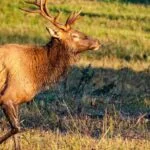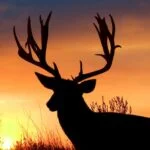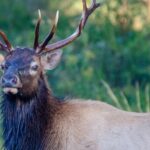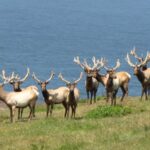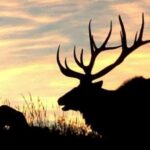Editor’s Note: Brian Mosley from Bloomfield/Farmington, New Mexico, in the northwestern corner of New Mexico, says, “What I like about where I live is I’m 55 miles from Colorado, 1-1/2 to 2 hours from Utah and a 1 hour, 15-minute drive from Arizona. I can drive to any of these states, hunt elk, and go home after the hunt. Plus, if I take an elk, I can return it home quickly. Another advantage about where I live in New Mexico is Colorado, which has some of the most elk in the western states; I can buy an over-the-counter elk tag.” Mosley has been hunting elk for 22+ years and has taken many elk – most with his bow. Mosley’s an avid elk and mule deer hunter but also enjoys being a football and track coach and a strength-and-conditioning coach for students at the junior high and senior high schools for the Bloomfield school system. For Mosley, the challenge of the mountains and hunting elk and mule deer in high terrain is just another day’s workout,
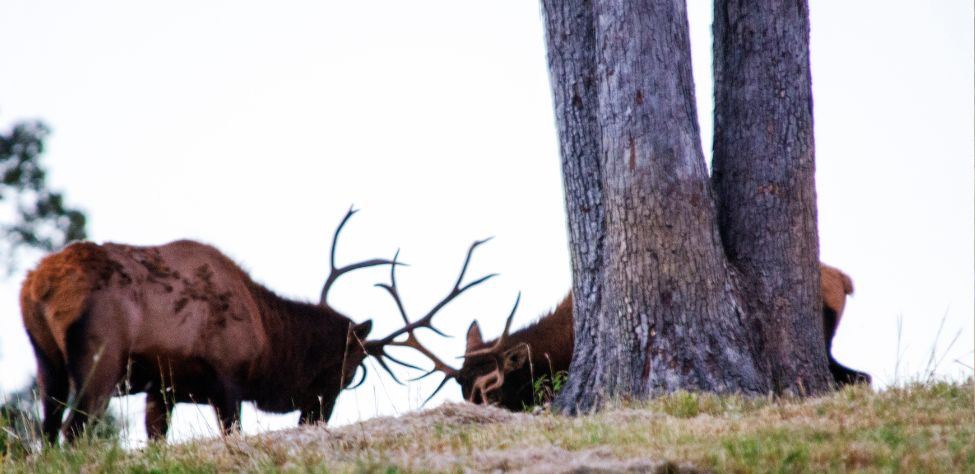
I had planned a hunt in Colorado for myself and my then 15-year-old son Kenyon, who had a deer tag. I had an elk tag. Before this hunt, I realized I might have to help carry out an elk and a mule deer if Kenyon took one. So, I wanted to be in the best shape possible.
I started getting in shape for this hunt well before the hunt. Because I’m a strength-and-conditioning coach, a football coach, and a track coach, I knew that to perform at my best, I had to get in the best shape before the hunt. I started training for the Train to Hunt Competition, a relatively new type of 3D archery competition that’s designed for bowhunters, especially elk and mule deer hunters, to simulate the tasks that these western hunters may have to perform if they have successful hunts and harvest animals. These competitions are held in all the western states. You can also learn more at their Facebook page.
Not only did I want to get my body and mind in shape for the hunt, but because I also shoot competitively for PSE, I liked the idea of competing in a new form of 3D archery. I’m always looking for that next challenge or a new type of archery competition. I liked the idea of an archery competition that would help me prepare mentally and physically with my bow for this hunt with Kenyon.
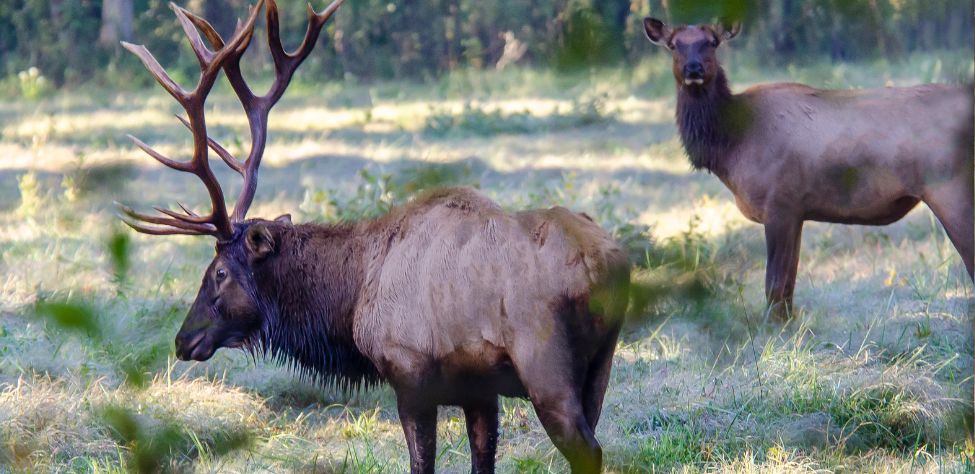
About four years ago, Kent Claremont from Oregon started the Train to Hunt Competition. These competitions challenge your body and mind to hunt and shoot in the high country. Train to Hunt is a bowhunter competition for archers who shoot traditional archery or hunt with compound bows. This competition has several different challenges.
One of the events is shooting a 20-target 3D competition, which is held on the first day, but this 3D competition is not like traditional 3D archery. When you arrive at a target, you may have to:
- Judge the distance to the target, draw, and shoot in a few seconds;
- Step out from behind a tree at full draw, judge the target quickly, and shoot;
- Get an arrow off in 5 seconds;
- Get two arrows off in 10 seconds at the target;
- Shoot on your knees and
- Draw and shoot at targets, often uphill or downhill, while sitting flat on the ground.
The second competition is called a meat carry. You may have to carry a pack weighing 25 – 80 pounds, depending on your age. Because I’m in the Master’s Class, I have to carry an 80-pound pack over a 2-3 mile course to simulate carrying the meat out after you’ve taken an elk.
The third day is the 3D challenge. You’ll wear a pack weighing 20 to 25 pounds on your back and must run to six stations over a 2-3 mile course. At every station, you stop, look at a 3D target, guess the distance, take the shot, and then follow the shot with a specific type of designated exercise like step-ups, push-ups, burpees, and carrying a 100-pound bag 100 yards. Next, you must turn around and return that bag to the starting point.
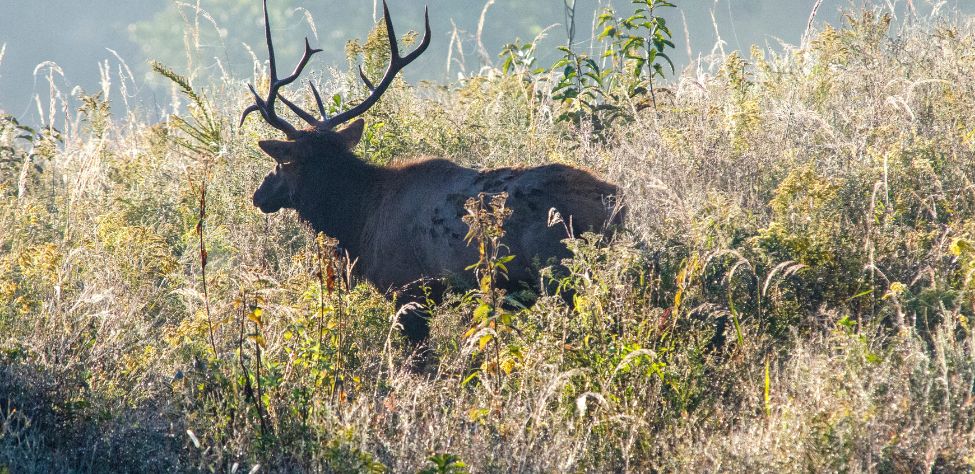
On the first day of this hunt, Kenyon took his first forked-horn buck – with his PSE Chaos bow at 23 yards – not far off the trail. Other than the day Kenyon was born, this was the most fantastic day of my life. We were about 1/2 a mile from where we’d left the truck. I got the car fairly close to where the buck was. After field-dressing, we dragged him to the car, loaded him up, left the woods, drove back home, and finished butchering the buck. Happy and proud of his buck, Kenyon stayed home the next day. Besides, I think he thought his dad was crazy for climbing around in all the mountains that I hunted.
I left my truck at the same place where I’d left it the previous day and walked 2 miles farther into the woods from where Kenyon had taken his buck. I saw no elk or deer on the first day I hunted. The next morning I got up and discovered a herd of elk down in the bottom of what looked like a deep, dark hole in a canyon, about 1-1/2 miles away. The hole was an 800-foot drop down in the canyon. Moving slowly and getting me to a place where the elk couldn’t spot me required about 1 1/2 hours. Once I was within 400 yards of the elk, I took my shoes off and started calling like a cow elk as I moved closer and closer to the herd. A couple of times, a couple of cows in the herd either saw or smelled me. Even though they ran off a little way, they weren’t spooked.
I finally got close to the herd and sat before a tree. I had elk from 25-50 yards from me. One of the bulls in the herd was a freak with 5 points on one side of his rack and three on the other, and he was chasing a cow. When the cow stopped, that bull stopped, and I shot him at 35 yards. I like taking freaky-racked bulls. Anytime one of those kinds of bulls gives me a shot, I’ll take him.
I had to make two trips back and forth to my truck to get the meat out and another trip back and forth to get my camp out. That was when I could tell that my strength and conditioning practice and the Train to Hunt competition had paid off. On the two trips with the meat I made to my truck, I had to climb out of that 800-foot hole with all that meat weight on my back.
Looking for more content? Check out our YouTube channel and watch “Avoid Overhunting a Spot – Bob Sheppard” by John E. Phillips.
Expert Guidebooks on Elk Hunting: Best Sellers
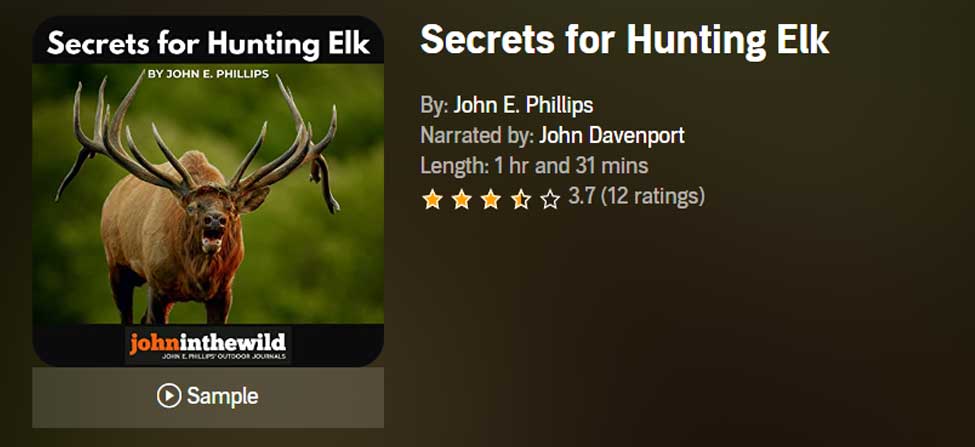
Secrets for Hunting Elk
The quickest, easiest (if there is an easy way), and safest way to find and take that bull elk of a lifetime will be to hunt with a guide.
Chad Schearer, a longtime Montana guide and TV personality, told me, “My hunter is my gun. If I get to the elk, and my hunter isn’t with me, then we don’t take the elk. My job is not only to find the elk but also to help the hunter get to the elk and make the experience as enjoyable as I can for him.” That’s the kind of fella with whom I want to go elk hunting.
An elk hunt can be tough, but it doesn’t have to be so tough that you don’t enjoy it. That’s why this elk hunting book starts with the confessions of an elk guide and with Chad Schearer’s philosophy of what the guide and the hunter’s relationship should be.
A good portion of your success will depend on your physical condition, and Matt Morrett of Harrisburg, Pennsylvania explains how an eastern hunter can get ready physically during June and July to hunt western elk, the animals he describes as, “Like deer or turkeys on steroids.”
Wayne Carlton, well-known elk hunter and TV and video personality from Montrose, Colorado, tells us what types of elk calls to use and what to say to the elk. Mike Miller of Colorado, another elk guide and Mossy Oak video personality, has tactics for the best equipment for bowhunting and gun hunting elk.
You’ll learn helpful strategies and hunting tips in this book, as well as some straightforward hunting methods that will help to make your elk hunt more successful.
“Thanks to the advice in your elk hunting books, I was able to call up a nice 6-point (6X6) bull elk! He was bugling like crazy. I called him in from about a ¼ mile away. Called him into bow range (about 40 yards away). It was a thrill!” ~Rob Brannon
VERSIONS: AUDIBLE & KINDLE
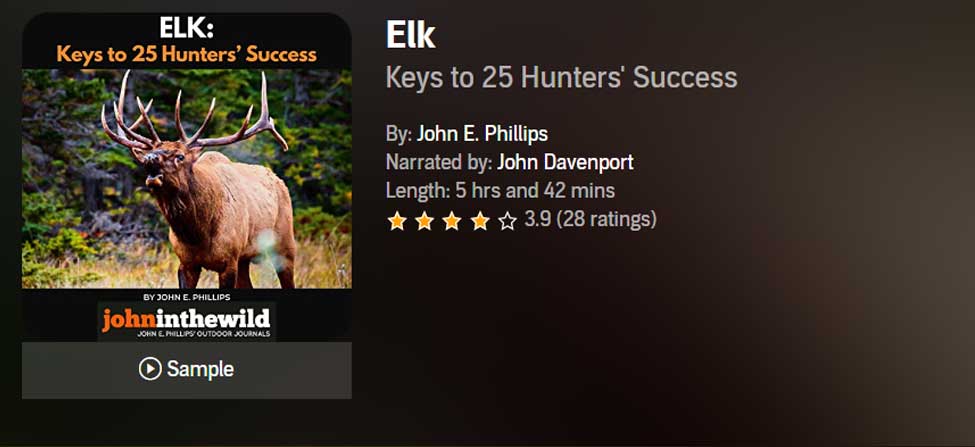
Elk: Keys to 25 Hunters’ Success
Often just one tip or tactic makes the difference in whether you take an elk home to dinner or have to hike back to the truck by yourself. In John E. Phillips’ latest elk book, Elk: Keys to 25 Hunters’ Success, you’ll learn from successful elk hunters the strategies they use to find and take elk.
Many know that the technique that seems to work most often is to hunt where other elk hunters don’t and understand where the elk are before you go on a hunt by studying data from each state, visiting HuntData (see chapter 1), examining maps, and reading postings on elk forums.
This book also tells you how to get ready physically for an elk hunt, including participating in Train to Hunt Competitions, what gear you need to take, how to enjoy a successful do-it-yourself elk hunt, or how to pick the best elk guide for you. You’ll also hear about the X System and the Broken Y System of hunting elk.
Although no one person has all the answers on how to help you find and take your elk, I’m convinced that this book’s outdoors men and women will teach you how to have satisfying elk hunts.
As my friend Karl Badger once told me, “Elk hunting doesn’t get any better than when I ride horses into the high backcountry, see two grizzly bears, hear a pack of wolves howl close to camp all night long, eat plenty of delicious food prepared on a fire and enjoy the company of good friends.”
VERSIONS: AUDIBLE, KINDLE & PRINT
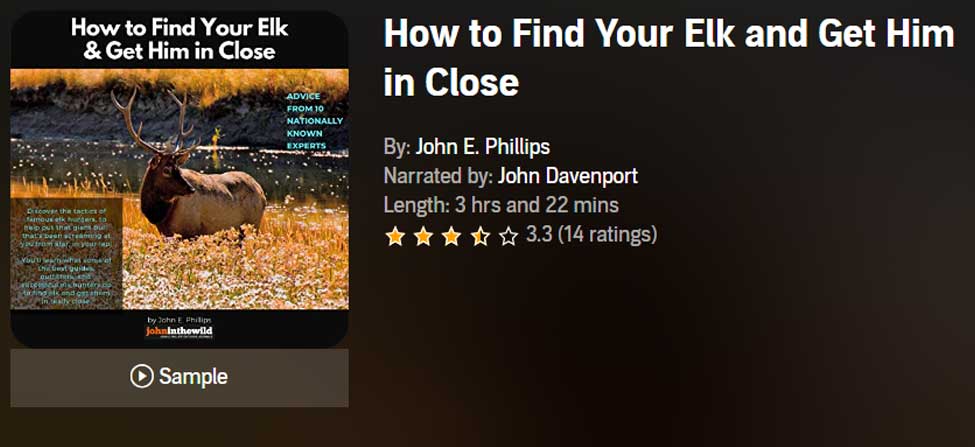
How to Find Your Elk and Get Him in Close will teach you the tactics of 10 nationally known elk hunters, to help put that giant bull that’s been screaming at you from afar, in your lap. You’ll learn what some of the best guides, outfitters, and successful elk hunters do to find elk and get them in really close.
Also in this audiobook, you’ll notice that the majority of the experts call elk to within bow range. We selected numerous bowhunters and bowhunting guides, since the bowhunter has to get much closer to a bull than the gun hunter does – often less than 20 or 30 yards – practically in your lap.
On one elk hunt, I’d heard this bull bugle all morning. My guide had called him within 30 yards, and he was standing just inside black timber. I saw the smoke from his nose wafting out into the icy air less than 30-yards away. All the bull had to do was step out, and I could take the shot with my bow. But then, through no fault of my guide or me, the bull vanished.
The only conclusion I could come up with to understand why the bull I wanted to take with my bow hadn’t stepped out and given me a shot, was because he got raptured. He evidently had left the earth with no trace of himself.
This hunt was when I started wanting to learn more about hunting elk up close. In this book, I’ve tried to find some of the most knowledgeable, experienced, and practical elk hunters. I’ve always found that the best way to learn any outdoor skill, is to either hunt or fish with the best sportsmen in that field.
Often, in elk hunting, that means elk guides, who generally hunt every day of the season and receive a salary for every hunter they guide. So, I’ve put together a group of some of the best elk hunters I know to help us all learn how to find bull elk and get them in close.
VERSIONS: AUDIBLE, KINDLE & PRINT
Tomorrow: An After School Bull Elk

